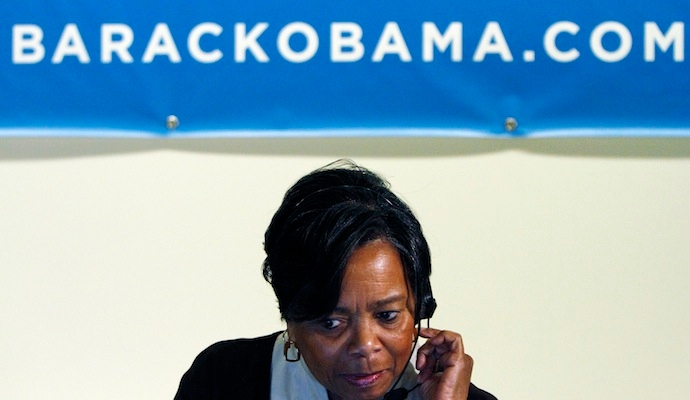At a wine-tasting-cum-briefing of volunteers at the Democratic Women’s Club headquarters in Washington last month, Obama campaign adviser Mindy Burrell stood up in a flowery dress. ‘Get people to visualise election day,’ she told the women about to knock on doors in the key swing state of Virginia. ‘How will they go and vote? What time will they go — after work? After dropping the kids off at school? What route will they take?’
If people said they planned to vote for President Barack Obama, the women were to ask them to sign a pledge card explaining why, which would be posted back to them just before election day on 6 November.
The volunteers, mostly lawyers or wealthy housewives, looked dubious. But Mindy assured them: ‘It’s all scientifically proven!’
Experiments by behavioural scientists have shown that getting people to visualise their voting day in advance increases turnout by three percentage points (ten if they live alone), while getting reminders can increase turnout by between five and ten per cent. In an election as tight as this one, where Obama and Mitt Romney are statistically tied, every vote (in a swing state) really does count, and such numbers are crucial.
While the media coverage is focusing on rallies and the last-minute dash by Obama and Romney through seven swing states, the real work of the first ever billion-dollar campaign is being done behind closed doors.
‘We have our eye on the wrong part of it,’ said Sasha Issenberg, author of an intriguing new book, The Victory Lab: The Secret Science of Winning Campaigns. ‘At best, what we are reporting is a small part of what campaigns actually do.’
Never before has a campaign combined, on the scale of these elections, social science on why people vote with micro-targeting from unprecedented access to information about voters.








Comments
Join the debate for just £1 a month
Be part of the conversation with other Spectator readers by getting your first three months for £3.
UNLOCK ACCESS Just £1 a monthAlready a subscriber? Log in